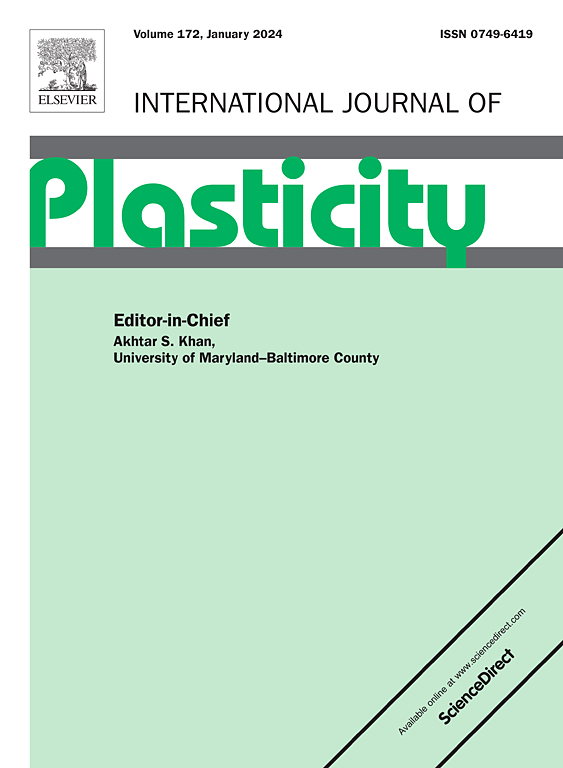Interactions of austenite-martensite interfaces with Ni4Ti3 precipitates in NiTi shape memory alloy: A molecular dynamics investigation
IF 9.4
1区 材料科学
Q1 ENGINEERING, MECHANICAL
引用次数: 0
Abstract
Precipitation of secondary phases is a common strategy used to control both the structural and functional properties of shape memory alloys. It can be used to promote nucleation of the martensitic transformation as well as improve cyclic stability. Less is understood about how precipitates affect the progression of an ongoing transformation, i.e., motion of austenite-martensite interfaces. In this study, we performed molecular dynamics simulations of the interaction of austenite-martensite interfaces moving in the NiTi alloy with Ni4Ti3 precipitates. It was found that the nanoscale precipitates obstruct interface motion until a sufficient undercooling is reached. The simulation results can be quantitatively explained with thermoelastic effects – elastic deformation of the precipitates acts to oppose the thermodynamic driving force favoring the transformation. A simple model is proposed to predict a more difficult transformation in shape memory alloys with higher concentrations of and/or harder precipitates. Additionally, simulations of cyclic transformations implicate inelastic deformation at the precipitate-matrix interface as one mechanism responsible for the cyclic drift in transformation characteristics. Deformation originated in a thin, amorphous interfacial layer and expanded with increasing cycles.


NiTi形状记忆合金中Ni4Ti3相与奥氏体-马氏体界面相互作用的分子动力学研究
二次相的析出是控制形状记忆合金结构和功能性能的常用方法。它能促进马氏体相变的成核,提高循环稳定性。对于沉淀如何影响正在进行的转变的进展,即奥氏体-马氏体界面的运动,人们知之甚少。在本研究中,我们对Ni4Ti3析出物与NiTi合金中移动的奥氏体-马氏体界面的相互作用进行了分子动力学模拟。研究发现,纳米级的析出物阻碍了界面的运动,直到达到足够的过冷。模拟结果可以用热弹性效应来定量解释——析出相的弹性变形与有利于转变的热力学驱动力相反。提出了一个简单的模型来预测具有较高浓度和/或较硬沉淀的形状记忆合金的更困难的转变。此外,循环转变的模拟表明,沉淀-基体界面的非弹性变形是导致转变特征循环漂移的一种机制。变形起源于薄的非晶界面层,并随着循环次数的增加而扩大。
本文章由计算机程序翻译,如有差异,请以英文原文为准。
求助全文
约1分钟内获得全文
求助全文
来源期刊

International Journal of Plasticity
工程技术-材料科学:综合
CiteScore
15.30
自引率
26.50%
发文量
256
审稿时长
46 days
期刊介绍:
International Journal of Plasticity aims to present original research encompassing all facets of plastic deformation, damage, and fracture behavior in both isotropic and anisotropic solids. This includes exploring the thermodynamics of plasticity and fracture, continuum theory, and macroscopic as well as microscopic phenomena.
Topics of interest span the plastic behavior of single crystals and polycrystalline metals, ceramics, rocks, soils, composites, nanocrystalline and microelectronics materials, shape memory alloys, ferroelectric ceramics, thin films, and polymers. Additionally, the journal covers plasticity aspects of failure and fracture mechanics. Contributions involving significant experimental, numerical, or theoretical advancements that enhance the understanding of the plastic behavior of solids are particularly valued. Papers addressing the modeling of finite nonlinear elastic deformation, bearing similarities to the modeling of plastic deformation, are also welcomed.
 求助内容:
求助内容: 应助结果提醒方式:
应助结果提醒方式:


